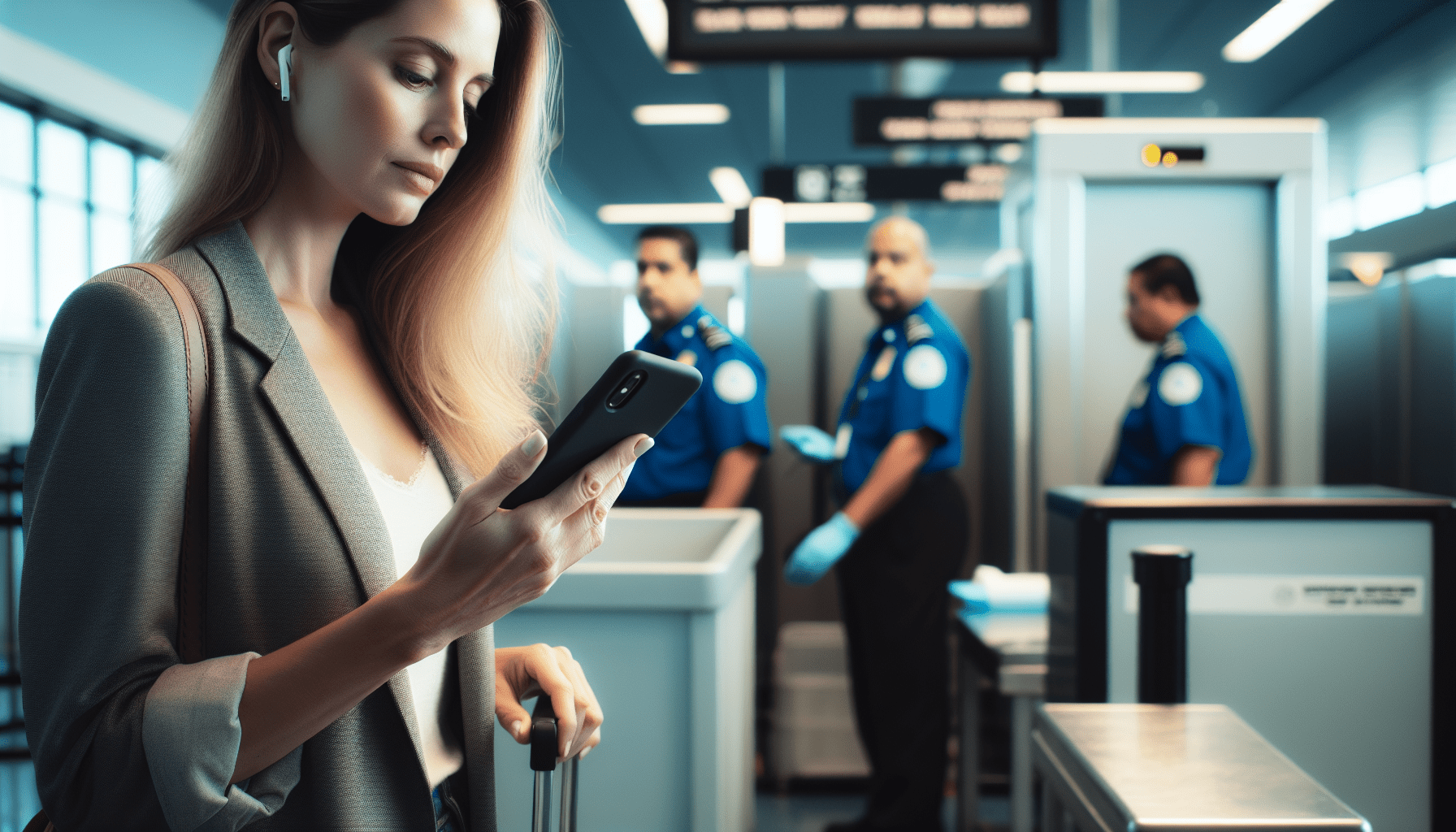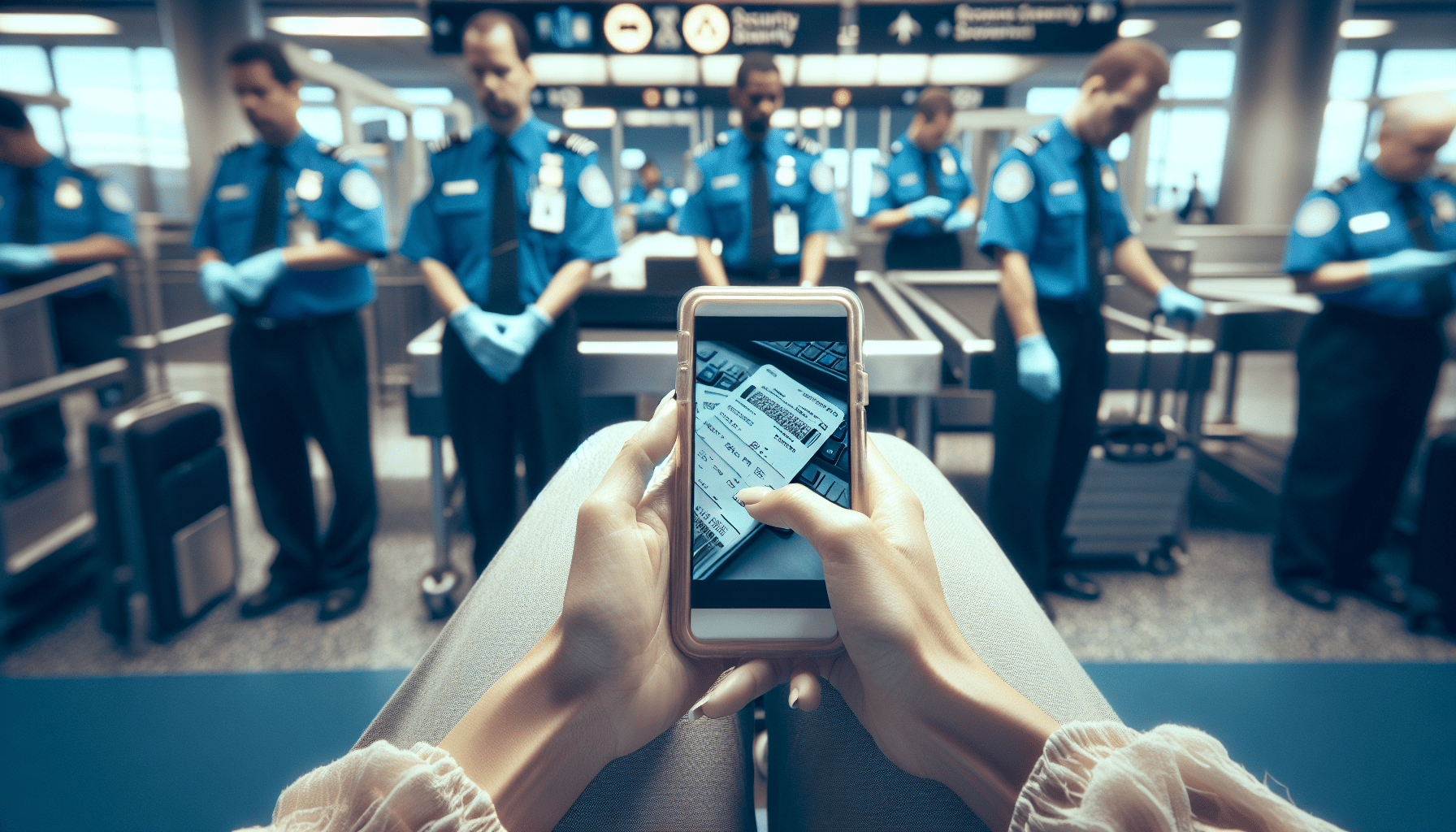BAGAIL 4 Set/6 Set/8 Set Compression Packing Cubes Travel Accessories Expandable Packing Organizers(Black ClothPattern 4 Set)
$15.99 (as of December 24, 2024 22:01 GMT +00:00 - More infoProduct prices and availability are accurate as of the date/time indicated and are subject to change. Any price and availability information displayed on [relevant Amazon Site(s), as applicable] at the time of purchase will apply to the purchase of this product.)Navigating airport security can feel overwhelming, especially when you consider all the personal information you need to provide. From the Secure Flight program that prescreens your details against watchlists to the advanced imaging technology (AIT) machines that screen your body, the TSA employs multiple layers of security. These measures aim to protect both safety and privacy, but questions remain about how well your personal data is safeguarded throughout the process. Automated target recognition software and same-gender pat-downs help reduce intrusiveness, yet concerns about privacy violations and data breaches persist. This article delves into the intricacies of TSA’s screening procedures, examining the balance they strike between maintaining rigorous security and respecting passenger privacy. How protected do you really feel during the TSA’s screening process? It’s a question many travelers wrestle with as they hurriedly take off their shoes and shuffle through airport security checkpoints. In an era where security concerns and privacy rights often clash, understanding how the Transportation Security Administration (TSA) balances these priorities is crucial. So, how well does the TSA safeguard your personal information, and what measures are in place to protect your privacy during screenings? Let’s dive deeper.

Shop These Accessories for a Comfortable Trip
The Preliminary Screening Process
TSA’s screening doesn’t begin the moment you step into the airport. It actually starts long before you even think about packing your bags. Here’s a breakdown of what happens.
The Secure Flight Program
Secure Flight is TSA’s behind-the-scenes initiative to ensure your safety. This program collects essential information like your full name, date of birth, and gender. This data is then cross-checked against government watchlists, including the No Fly List and the Terrorist Screening Database (TSDB).
The Secure Flight program is designed to collect only the necessary amount of personal information to conduct effective safety matches. According to a System of Records Notice, passenger records that don’t match any watchlists are deleted within seven days after you complete your trip. For safety reasons, potential matches are kept for seven years, while confirmed matches can be retained for up to 99 years.
Identity Verification and Physical Screenings
Upon arriving at the airport (TSA recommends arriving at least two hours before your flight), you’ll face several layers of security, all of which involve some level of data collection.
Check-In and Boarding
When you approach the check-in desk, you’ll undergo an identity verification step. You’ll need to present your passport and boarding pass to confirm that you’re indeed the person who should be boarding the plane. This verification might happen multiple times during your airport journey, just to be extra sure.
Physical Screenings
Physical screenings are the face of airport security and also where privacy concerns often spike. TSA officers, trained to be professional and respectful, conduct these screenings. However, what one person considers “respectful” can vary, making this area particularly sensitive.
Pat-Downs
If you set off alarms on a metal detector or an Advanced Imaging Technology (AIT) machine — or if you simply refuse to go through these machines — you may be subjected to a pat-down. This can be an uncomfortable experience but is designed to be as minimally intrusive as possible.
Advanced Imaging Technology (AIT) Machines
AIT machines, or body scanners, generate much debate. The good news is that TSA uses Automated Target Recognition (ATR) software to reduce the intrusiveness of these scans. Instead of detailed body images, TSA officers see a generic outline of a person, highlighting areas that may need further screening.
| Screening Method | Privacy Measure | Potential Concerns |
|---|---|---|
| Basic Check-In | Identity verification with passport/boarding pass | Misuse of personal data |
| Metal Detectors | Minimal data collection | Error resulting in unnecessary pat-downs |
| AIT Machines | Generic outline images | Misinterpretation of images by TSA staff |
| Pat-Downs | Conducted by same-gender officers, private option | Discomfort and subjective nature of “respectful” |
After jumping through these hoops, you’re good to go and can board your flight.

Shop These Accessories for a Comfortable Trip
Balancing Security and Privacy
This balancing act of ensuring security while maintaining privacy is delicate. The TSA implements multiple measures to safeguard your privacy, but concerns persist.
Measures Implemented by TSA
Here are some of the key measures in place:
- Automated Target Recognition (ATR) software: This software in the AIT machines ensures that only generic outlines are displayed, not detailed body images.
- Same-Gender Officer Pat-Downs: If you need a pat-down, rest assured it will be conducted by an officer of the same gender.
- Private Screening Requests: If you’re uncomfortable with a public pat-down, you can request a private screening with a witness present.
Ongoing Concerns
Despite these measures, there are still ongoing concerns. In rare cases, inappropriate behavior by TSA officers has been reported. Then there’s the potential for data breaches — an ever-present risk in our data-driven world.
Data Breaches
The TSA, like any organization dealing with personal data, faces cyber threats. Although they have measures in place to protect your data, it’s not an impenetrable fortress.
Debates on TSA Screenings
Proponents argue that rigorous screening is necessary to prevent terrorism and ensure passenger safety. They point to the absence of successful large-scale attacks on U.S. air travel since 9/11 as proof that these measures work. Critics, on the other hand, argue that the procedures are often intrusive and sometimes ineffective. They call for more privacy-conscious alternatives and greater transparency about how collected personal data is used and stored.
Legal Framework
Much of TSA’s approach is grounded in the publicly available Privacy Act of 1974 and Fair Information Practice Principles (FIPPs). These govern how personal information is collected, used, maintained, and disseminated for privacy and data protection purposes.
| Argument | Points | Counterpoints |
|---|---|---|
| Proponents | Essential for preventing terrorism | Sometimes measures can be overly intrusive |
| Proponents | No large-scale attacks since 9/11 | Raises privacy concerns |
| Critics | Intrusive measures | Need for security as highest priority |
| Critics | Sometimes ineffective | Complex security landscape necessitates measures |
The ultimate aim is a balance that ensures public safety while respecting individual privacy. Travelers should stay informed and the TSA should prioritize transparency to make air travel both safe and comfortable.
How You Can Stay Informed
Given the complexity of TSA’s screening processes and the measures in place to protect privacy, it’s important to stay informed. Here’s how you can better understand and potentially enhance your own privacy:
- Read Up on Policies: Be familiar with TSA privacy act notices and how your data is handled.
- Exercise Your Rights: Understand that you can request private screenings and know the protocols for filing complaints if you feel your privacy was violated.
- Remain Vigilant: Pay attention to your surroundings and report any suspicious or inappropriate behavior by TSA officers.
Wrapping Things Up
So, how protected is your privacy during TSA’s screening process? The short answer is that while considerable measures are in place to protect your personal information, it’s far from foolproof. The TSA walks a tightrope between maintaining security and safeguarding your privacy, with both areas punctuated by successes and concerns.
By staying informed and aware, you can better navigate the intricacies of the TSA screening process, ensuring that your rights and privacy are maintained to the best extent possible. Safe travels!
Shop These Accessories for a Comfortable Trip






